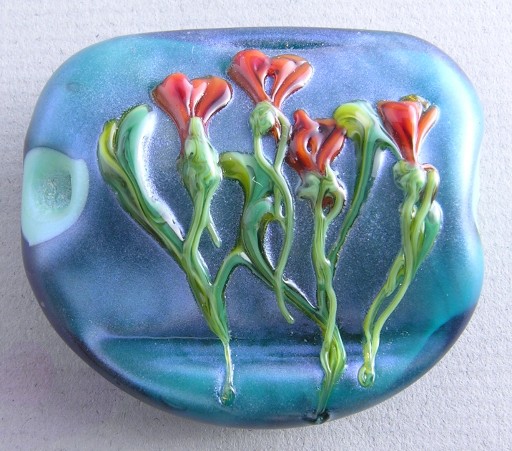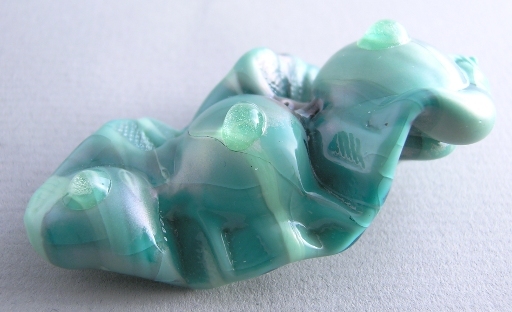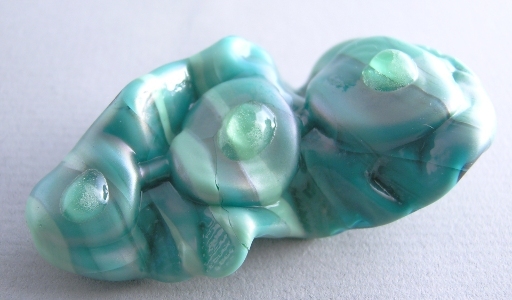Alas, if only I'd taken just 5 minutes to check my old check glass chart, I'd’ve discovered that the beautiful, intense capri blue thread-tested at around 112coe, whereas the opaque turquoisey greens and blues mostly hover around 106 or so. It might've saved me a lot of grief. But by the time I made this bead I was pretty frustrated with the cracking and incompatibility, and just made a huge honking bead, that, likely was too poorly shaped for the crush or long oval presses, and so I just squashed it with the triple chunky lentil press.
Then I took crosshatched pliers and ruffled the flanges, twisting the bead; dipped it in pixie dust, and globbed three dots in the center of each "lentil". One advantage to hollow beads is that they can be deformed more readily, I think.
I happen to find this an interesting and intriguing use for presses, though if I want to continue my explorations, I'll have to invest in a chunky lentil press;)
So far only one bead in this series has not cracked—this one:

39x45. Check glass, turquoise cased in capri, coated with hilite pixie dust & decorated with check floral canes. 2009
And those holes certainly give it sufficient wonkitude for this series, though otherwise it's a fairly attractive bead: I like the way the color works in the background.
I expect the reason it hasn't cracked (yet) is because the higher coefficient glass, the capri, cases the turquoise, effectively compressing it, as with tempered glass. But I rather strongly suspect it will join its brethern in cracked bead limbo someday, so I suppose I ought to give it to one of the kids, or put in the bad bead jar.
beads, 1Q 2009; photography & post, 3apr09.
Unless otherwise noted, text, image and objects depicted therein copyright 1996--present sylvus tarn.
Sylvus Tarn
